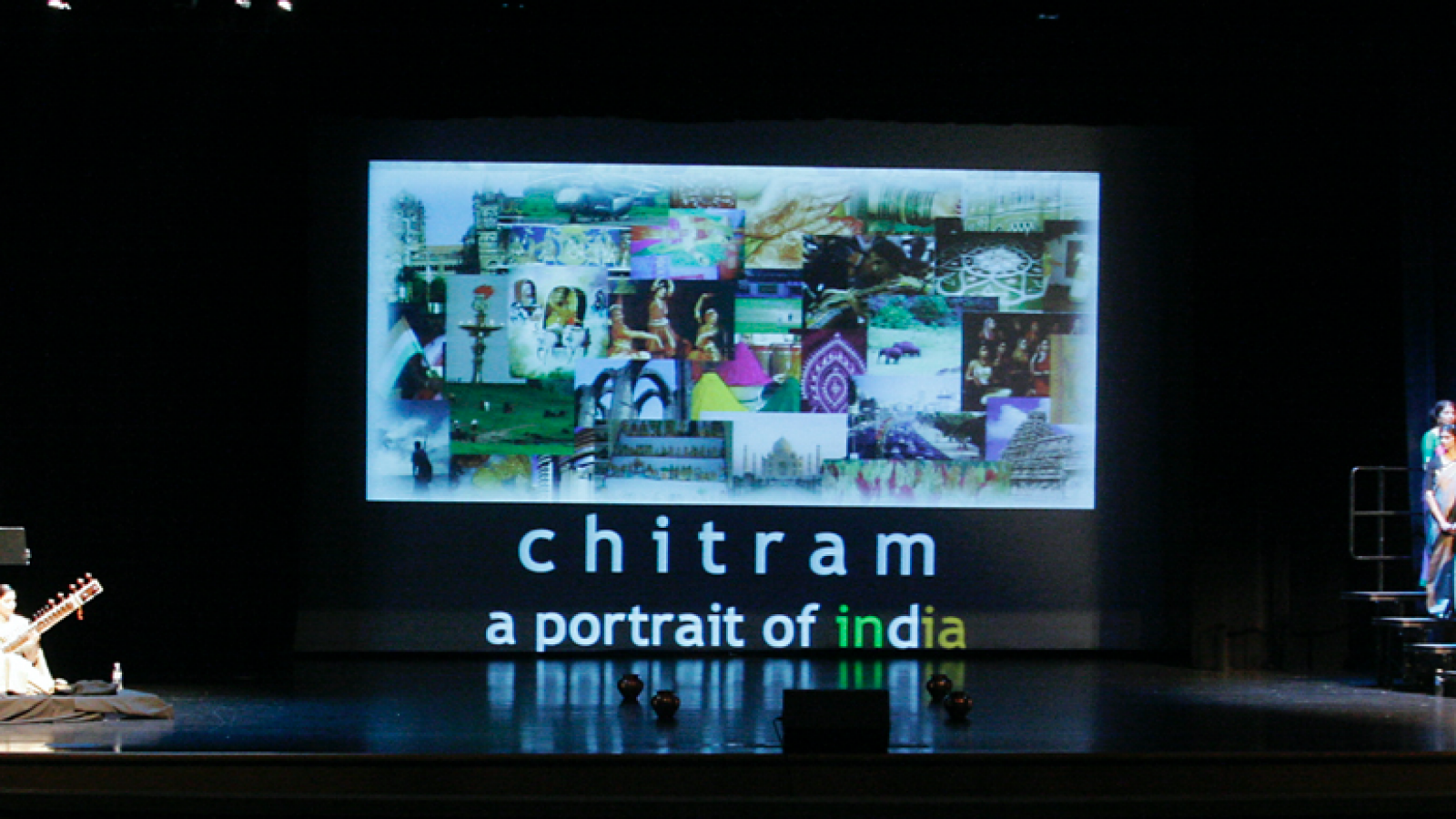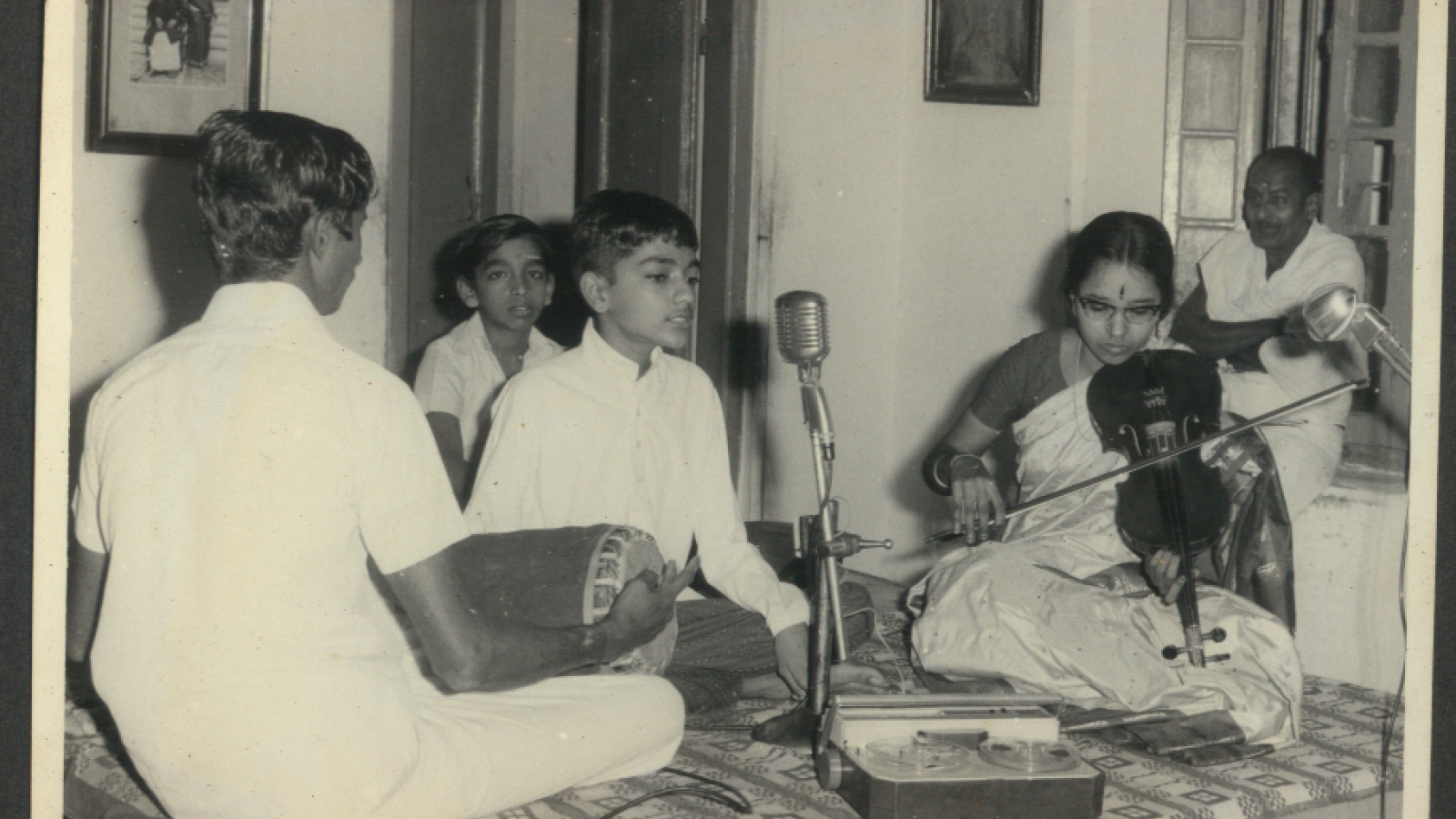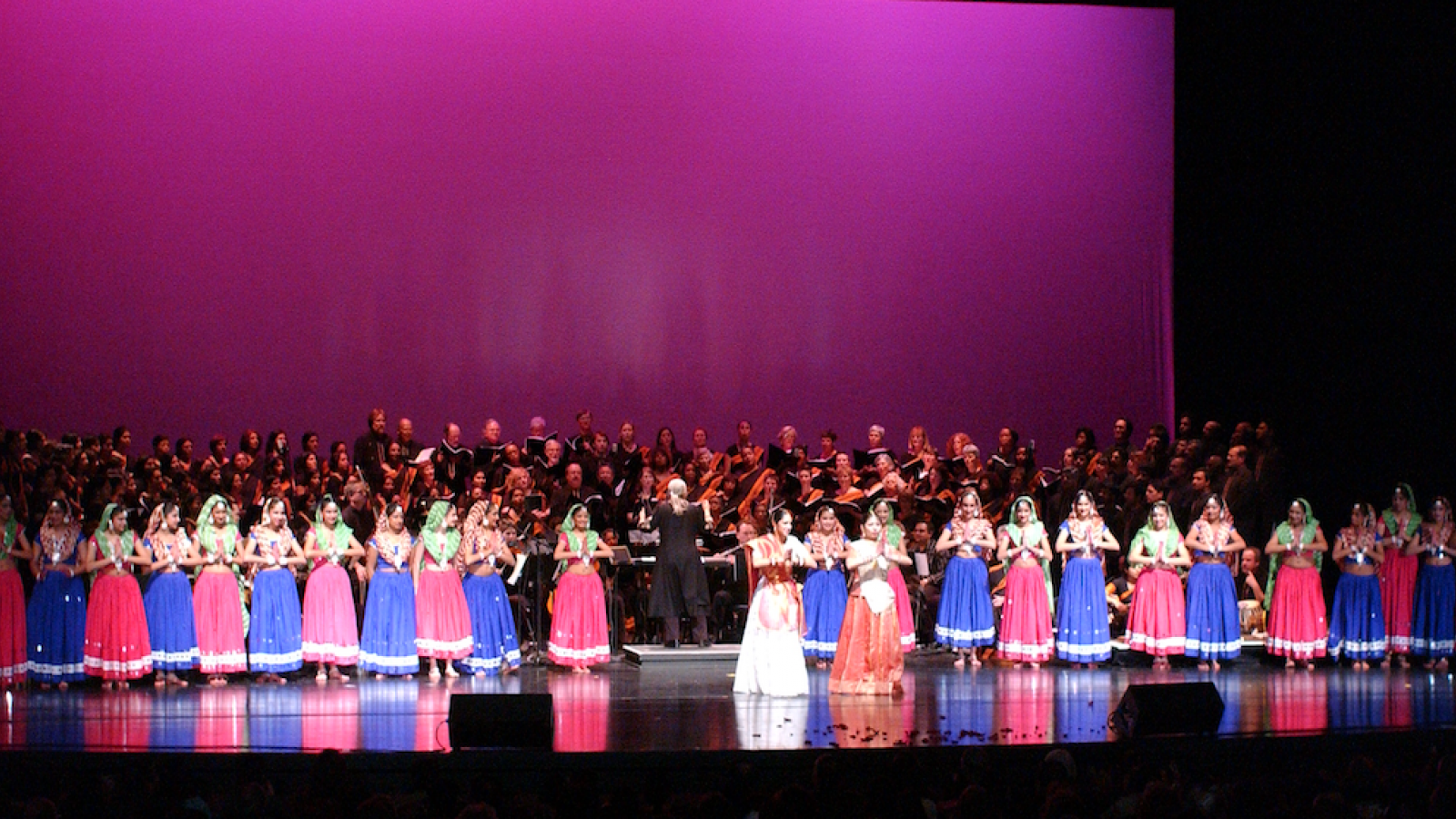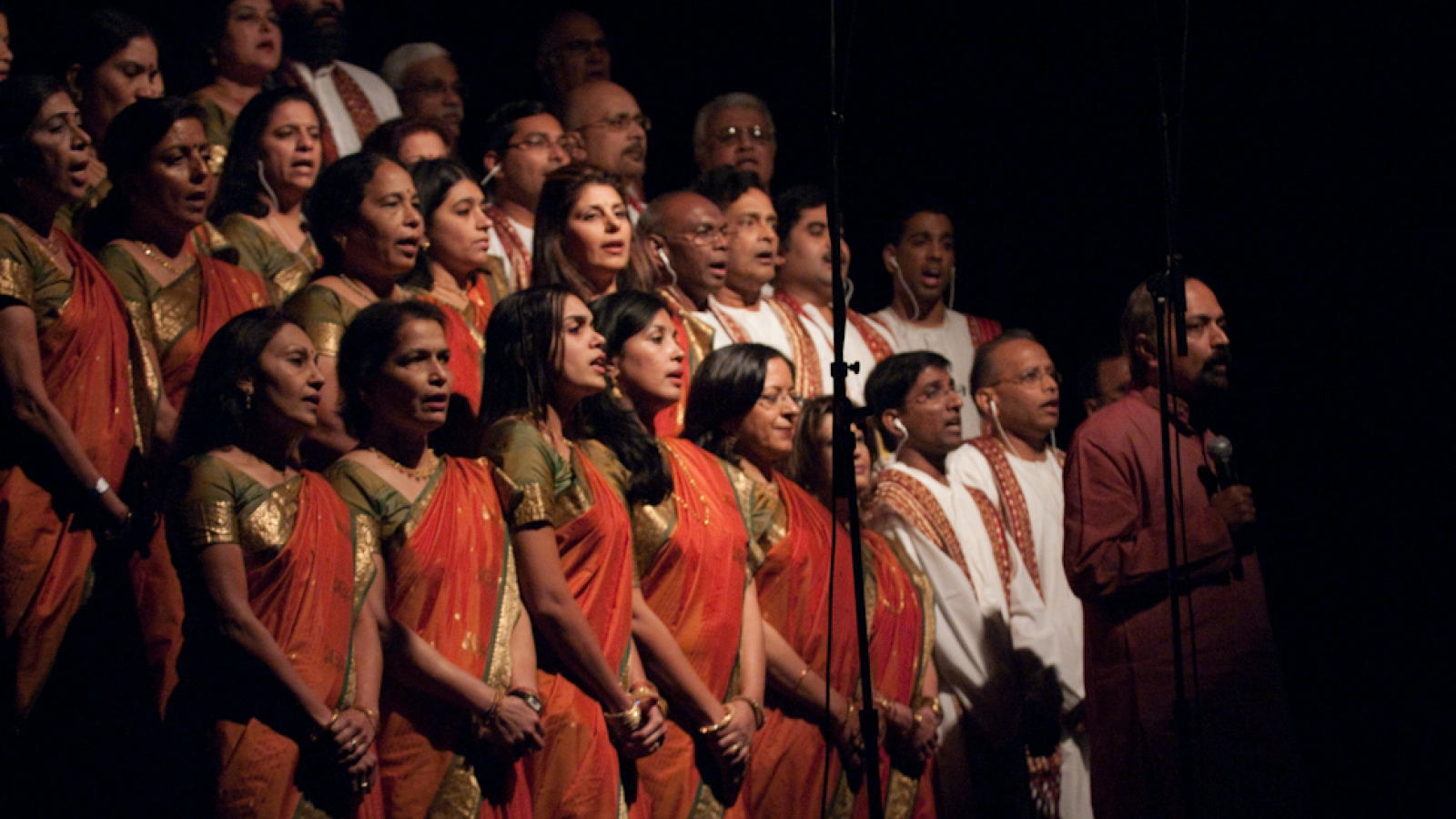Kanniks Kannikeswaran
"Indian music, umm, is pretty much about individual self expression. So, you have a soloist improvising on what is called a Raga. Raga is a melodic concept which deals with the relationship between the various pitches and of the atonic note. Umm, the tonic note is what anchors a concept. So, when you typically listen to an Indian music constitute listen to what sounds like a drum. That plays a central role in Indian, uh, traditional Indian music. There is no concept of range music in India at all because everything is about your expression, how you interpret a composition and express it. There is no concept of polyphony at all. So, there’s no concept of traditional Indian choral music. Choral music entered India only probably in the last a little over a hundred years. Umm, or maybe…. Uh, uh, it was inspired by the church composition… church music that was heard during the time of the British in India. Umm, in the 60’s and the 70’s you had choirs in cities like Calcutta and Madres, umm, which, uh, which, uh, used to have a lot of television, radio performances… performances of choral music but these were all centered around a lot of it was centered around folk tunes and patriotic themes. Umm, so there’s no formal history of choral music just like you have in the west. In the west you have a tradition that goes back several, several centuries. You have pieces written by leading composers or choirs like, even symphony’s use choral sections. Umm, there’s no room for choirs in traditional Indian choir music… sorry, in traditional Indian classical music."
Kanniks Kannikeswaran--known as "The Magical Musician from Madras"--is a teacher, composer, and pioneer of Indian American choral music. After graduating from the Indian Institute of Technology-Madras with a degree in Engineering, he pursued advanced degrees in Engineering and Business in the United States. As a composer, Kanniks believes that music can bring together diverse cultures and transcend differences. His choral music is inspired by Indian raagas, which blend together Indian chants, melodies, and taranas with an orchestral polyphony. This synthesis as first realized in his famous work, Shanti: A Journey of Peace, which combined Indian choral singers, United States choir singers, dances from different regions of India, and a 22 member orchestra. Using music to build community, Kanniks has also offered workshops on "Creative Power," taught courses at the University of Cincinnati, and collaborated with international artists such as Lakshmi Shankar and Catherine Roma. This work has helped him establish Indian community choirs in various places like Allentown PA, Tampa FL, Houston TX, and Minneapolis MN. A tireless, visionary composer, Kanniks has inspired audiences through his celebration of diversity and commitment to education.
"Across America, Voices Rise To Reinvent India"
Kanniks Kannikeswaran's Traditions episode
Contents of the Collection
- Images of choir singers at various performances
- Images of young Kanniks playing instruments, with family
- Excerpts from article in Voice of Asia describing history of Kanniks' Shanti and its recent performance in Houston
- Video of Kanniks in rehearsal
- Video of his choir performing at the World Choir Games, 2012
- Video of the entire "Ragas in Symphony" show




